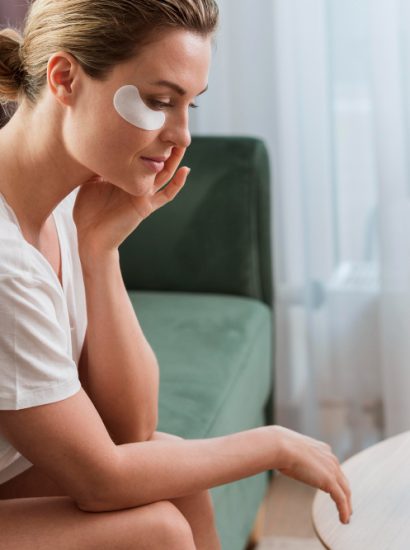Microneedling has become one of the most talked about skincare techniques in recent years. Loved by dermatologists, beauty enthusiasts, and influencers, this treatment promises smoother, firmer, and more radiant skin with minimal downtime. Whether performed professionally or at home with a derma roller or microneedling pen, microneedle skincare aims to stimulate collagen production and enhance overall skin health.
If you are new to microneedling, this guide will walk you through everything you need to know, from how it works to the benefits, risks, aftercare, and ideal products to pair with the treatment. By the end, you will have a complete understanding of how microneedle skincare can fit into your routine.
What Is Microneedle Skincare
Microneedle skincare refers to treatments that use very fine needles to create controlled micro channels on the skin’s surface. These micro injuries trigger the body’s natural wound healing response, encouraging new collagen and elastin production. As a result, the skin becomes smoother, plumper, and more even in tone and texture.
Microneedling can be done at home using derma rollers or electric microneedling devices. It can also be performed professionally by dermatologists or aestheticians, where needle depth is deeper and results are more dramatic. Regardless of the method, the goal is the same. Stimulate collagen, improve skin texture, and boost the effectiveness of skincare ingredients.
How Microneedling Works
Microneedling works through controlled skin injury. When tiny needles puncture the skin, three key phases occur. First is inflammation, where the skin responds to injury by increasing blood flow and activating healing cells. Second is proliferation, where new collagen and tissue begin forming. Last is remodeling, where fresh collagen strengthens and smooths the skin.
Beyond stimulating collagen, microneedling enhances product absorption. The micro channels created allow serums to penetrate more deeply, making active ingredients like hyaluronic acid, peptides, and vitamin C more effective. This combination of collagen stimulation and ingredient penetration makes microneedle skincare a powerful tool for improving the skin.
Benefits of Microneedle Skincare
Microneedling offers a wide range of benefits for various skin concerns. One of the main advantages is improved skin texture. Fine lines, uneven tone, and rough patches often soften over time as collagen increases. Many people also use microneedling to reduce acne scars. The micro injuries help break down old scar tissue and encourage new skin to form.
Another benefit is enhanced radiance. As the skin heals, it appears brighter and more refreshed. Those with enlarged pores often notice a reduction in pore visibility. Because the treatment increases the absorption of skincare products, hydrating and restorative serums work more effectively. Overall, microneedling supports healthier, stronger skin with consistent use.
Who Should Consider Microneedling
Microneedling is suitable for most skin types, including normal, dry, oily, and combination skin. It is especially helpful for individuals dealing with acne scars, fine lines, hyperpigmentation, mild wrinkles, or uneven texture. People in their late twenties and older often see the most dramatic anti aging benefits.
However, not everyone is an ideal candidate. Individuals with active acne breakouts should avoid microneedling until inflammation subsides. Those with eczema, psoriasis, or easily irritated skin may experience sensitivity. Pregnant individuals should consult a doctor before trying this treatment. If you have concerns, a dermatologist can advise whether microneedling is safe for your skin condition.
Microneedling at Home vs Professional Treatments
Both at home and professional microneedling offer benefits, but they differ in depth and results. Home devices typically have needle lengths under half a millimeter. This makes them suitable for improving skin texture and enhancing product absorption. Home treatments are cost effective and can be performed regularly.
Professional microneedling uses longer needles that reach deeper layers of the skin. These treatments offer faster and more dramatic results, particularly for deep scars or wrinkles. Clinics also follow strict hygiene protocols and use advanced machines that ensure precision.
If you are new to microneedling, beginning with at home tools before progressing to professional treatments is often a safe approach.
What to Expect During a Microneedling Session
A microneedling session typically begins with cleansing the skin to remove oil and debris. For professional treatments, a numbing cream may be applied to reduce discomfort. Once the skin is prepared, the device is rolled or stamped across the face in multiple directions.
The sensation varies from mild pressure to a slightly prickly feeling. Afterward, the skin may appear red or feel warm, similar to a mild sunburn. This is normal and usually subsides within a few hours to a day. Depending on the depth used, mild flaking or tightness may occur as the skin heals.
Best Ingredients to Use After Microneedling
Microneedling temporarily increases skin permeability, making ingredient choice crucial. Hydration and soothing products work best immediately after treatment. Hyaluronic acid is a popular choice as it replenishes moisture and supports healing. Peptides also encourage collagen formation and strengthen the skin barrier.
Avoid strong actives like retinol, exfoliating acids, benzoyl peroxide, and highly fragranced products for at least several days. Gentle, fragrance free formulations are ideal. Once the skin fully recovers, you can resume your usual active ingredients. Always prioritize hydration and barrier repair following microneedling sessions.
Common Mistakes to Avoid
Several mistakes can reduce the effectiveness of microneedling or lead to irritation. One of the most common errors is using a device too frequently. Microneedling should only be done once every one to four weeks depending on needle depth. The skin needs time to heal between sessions.
Another mistake is not cleaning devices properly. At home tools must be disinfected before and after use to avoid infection. Applying harsh skincare products immediately after treatment is also a problem, as the skin becomes more sensitive. Skipping sunscreen is another issue. Freshly treated skin is very vulnerable to UV exposure and needs protection.
How Long Until You See Results
Results vary depending on skin condition, treatment depth, and consistency. Most people see initial radiance within a few days. Collagen development, however, takes time. Noticeable improvements in texture and firmness often appear after four to eight weeks. For deeper scars or wrinkles, several months of consistent treatment may be required. With patience and proper aftercare, microneedling can produce long lasting improvements in skin quality.
Conclusion
Microneedle skincare is a powerful method for boosting collagen, improving skin texture, and enhancing the absorption of skincare products. Whether you are targeting signs of aging, acne scars, uneven tone, or dullness, microneedling offers a versatile solution. Understanding how it works, choosing suitable products, and following proper aftercare are key to achieving safe and effective results.
This beginner friendly guide provides a strong foundation for anyone interested in incorporating microneedling into their skincare routine. With consistent use and careful technique, microneedle skincare can lead to smoother, brighter, and healthier looking skin.
FAQs
How often should I do microneedling
Most people should microneedle once every two to four weeks. Deeper professional treatments require longer intervals to allow full healing.
Does microneedling hurt
Mild discomfort is normal, especially with deeper needles. Professional treatments often use numbing cream to reduce pain.
Can I microneedle if I have acne
Microneedling should not be done on active acne. Wait until inflammation improves to prevent irritation and spreading bacteria.
What should I apply after microneedling
Use gentle hydrating serums like hyaluronic acid and avoid harsh actives. Keep the skin moisturized and protected.
Is microneedling safe for sensitive skin
It can be safe for some people with sensitive skin, but patch testing and slower treatment frequency are recommended. Consult a dermatologist if unsure.
Also read: Korean Skincare for Uneven Skin Tone | Achieve a Bright, Even Complexion Naturally





